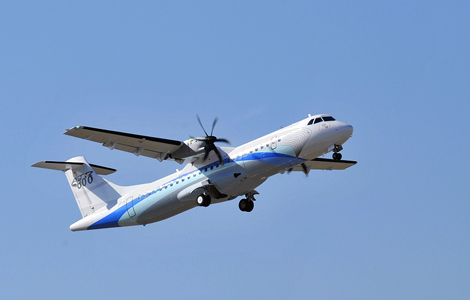Learning to Love Props–Again
Regional airliners powered by turboprop engines may be making a comeback
Back in the 70s, regional airlines began to play a significant role in the national transportation system by flying people from large hubs to small-town airports in rural America. The aircraft of choice was a twin turboprop of modest size, such as the Beech 99 or the Twin Otter, a bush airplane made by de Havilland Canada. Soon Embraer in Brazil was turning out the EMB 110 Bandeirante, and the “bandit,” as many called it, made serious inroads into the market. Many of those first-generation aircraft are still operating in other parts of the world, but not so much in North America.
Those were 19-seat airplanes, typically. But the industry was growing fast, and it began to look at 30-seaters. At the same time, some operators had detected an aversion among the flying public to airplanes with propellers. The turboprops were loud and not as fast as jets, and people would get one look at a twin turboprop parked at their gate and whine louder than the airplane’s engines. It was time to move on to regional jets.
For a regional jet to make economic sense, it has to provide a speed advantage so that the operator can fly more revenue legs on a given day than a turboprop would. If the price of fuel is manageable–and this is the key–the additional fuel consumption of the jet will be at least partly offset by an added couple of money-making trips.
It looks as if we may now be switching from a period where jets served the regional markets to a time when those jets will be parked and the turboprops will come back. Manufacturers like the French-Italian consortium ATR and de Havilland Canada have built turboprop airplanes with more seats and higher cruise speeds. The ATR 72-500, for example, delivers speeds well in excess of 300 mph. When flown on trips of, say, 300 miles, a jet is only a few minutes faster, but burns half again as much fuel. Fuel cost is affecting all airline operators, but the regionals are far more sensitive to operating cost. At the same time, engineers have learned how to cancel the vibrations generated by the propeller tips on the turboprop engine.
In a recent analysis published by AirInsight, a Baltimore, Maryland consulting firm, the company notes that one of the first regional airlines to reconsider its fleet makeup is the largest in the United States—SkyWest. The company has over 300 airplanes in its fleet. Says AirInsight, “The airline has to consider its 159 50-seat regional jets obsolete (given current economics)…We anticipate SkyWest will use a mix of high-speed turboprops and larger as it rationalizes its fleet.”
There are skeptics who believe that oil prices can’t remain high forever. Maybe not, but every time the economic news is favorable, oil seems to rise. With developing nations’ growing energy needs, global prosperity means expensive oil. Regionals can’t hedge fuel with the clout of the major carriers, one of which, Delta, is even in the bidding to acquire a shuttered Conoco-Phillips refinery in Philadelphia. As AirInsight concludes, “Absent a new and more fuel efficient 50-seat regional jet and continued high fuel prices, the future success of the high-speed turboprop appears inevitable.”
